
Motion is Lotion: Unlock the Secrets to Staying Active and Pain-Free While Sitting
January 2025
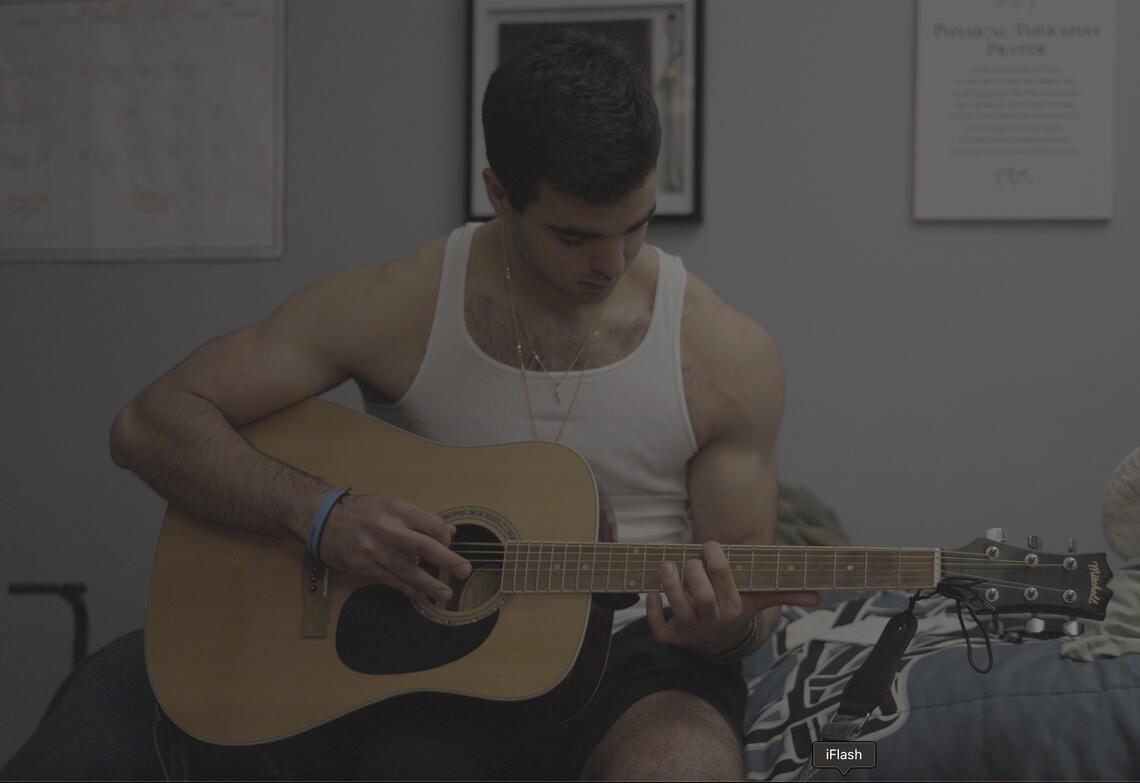
Sitting has become an ingrained part of our modern society. From office and desk jobs to remote work, commuting by car, train, bus, or airplane, playing an instrument, and all levels of schooling—from elementary education to advanced degrees—sitting is unavoidable. Ironically, even in Doctor of Physical Therapy school, we often spend hours sitting through lectures on the negative effects of prolonged sitting. While some might argue for the opposite extreme—standing all day —that doesn’t seem to crack the code either. The key lies in understanding that our bodies are designed to move. Any static posture, when held for too long, can lead to discomfort. The issue is not sitting itself; it is the duration, frequency, prolonged nature, and lack of movement while sitting that all compound into the problem. Regular movement and changing positions are essential strategies to address this modern challenge.
A 2008 study analyzing sedentary behaviors in American children and adults found that people spent an average of 7.5 hours per day engaged in sedentary activities, often in prolonged bouts (Matthews et al., 2008). That equates to roughly one-third of the day sitting. Estimate ⅓ of your day sleeping, and that means half of your waking day is dedicated to sitting. Even more concerning is that total sedentary time tends to increase with age, making it an ingrained habit that becomes increasingly difficult to break over time.
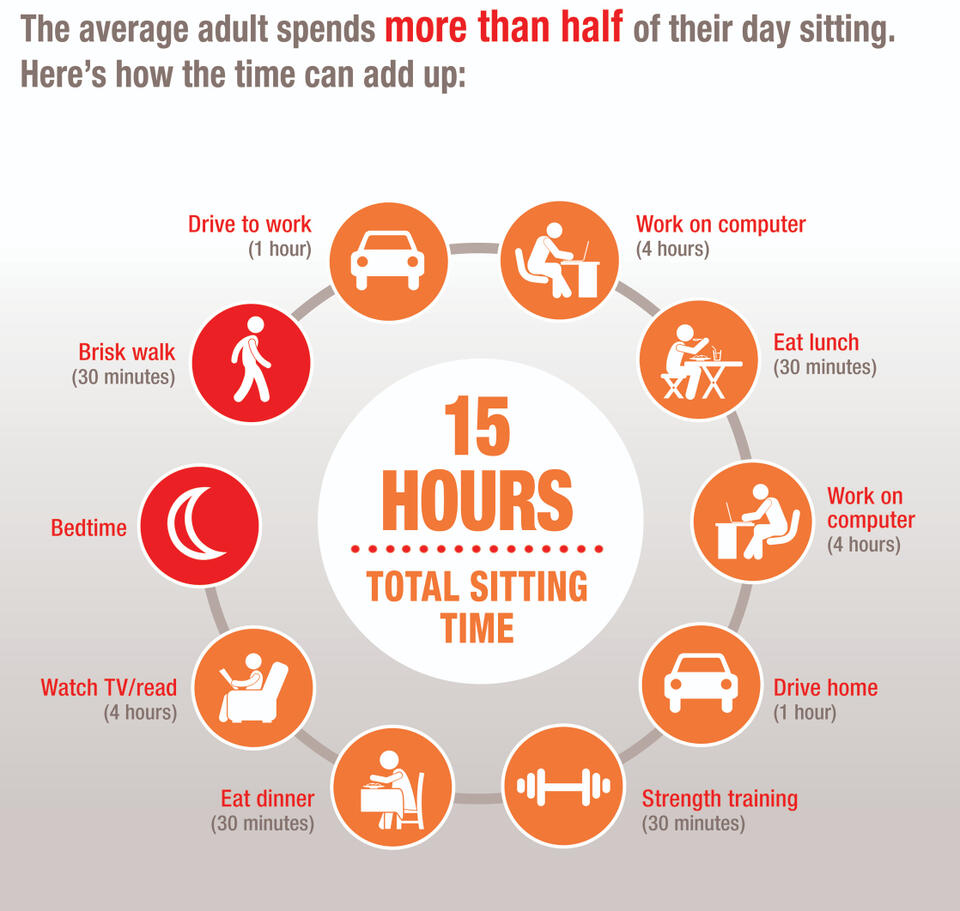
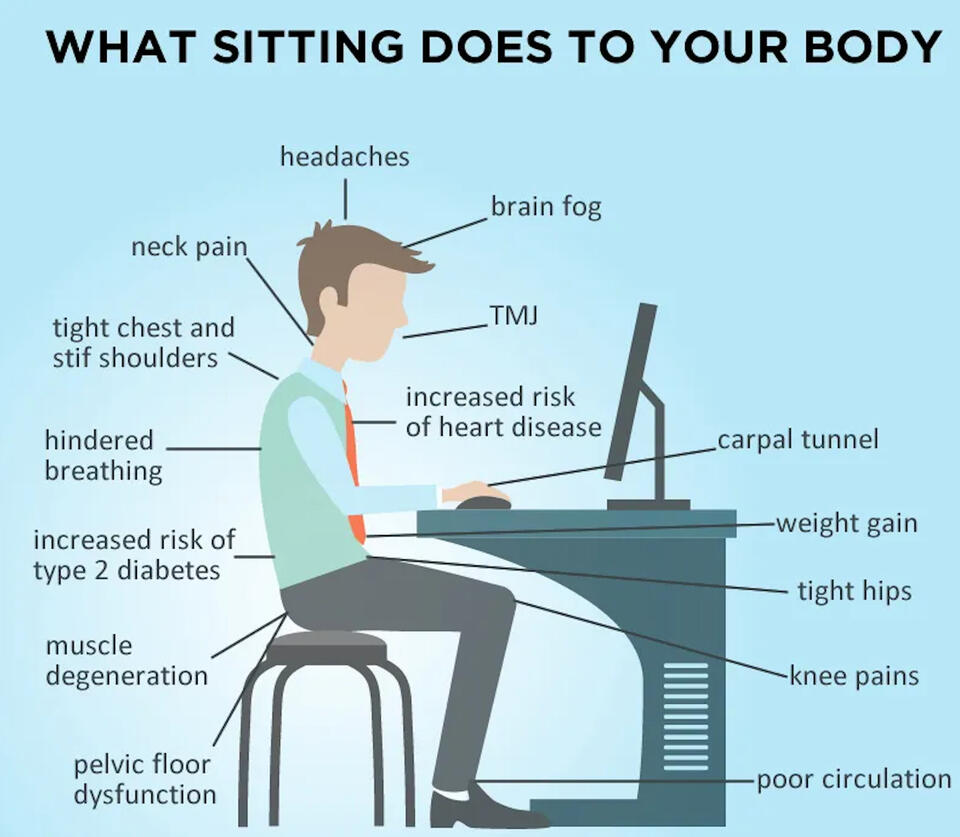
The environment and lifestyle one lives in significantly influence how much time is spent sitting. A study by Daneshmandi et al., 2017 examined approximately 500 Iranian office workers and found they spent an average of 6.29 hours of an 8-hour workday sitting. Notably, 73.6% of participants reported feeling exhausted during the workday. This can be explained using Newton’s first law of motion: an object at rest tends to stay at rest, while an object in motion tends to stay in motion. If you are stuck sitting and are not moving, your body is left feeling unenergized and inclined to remain in that “rest” state.
Sitting for extended periods without changing the position of the pelvis, ribcage, or neck can cause certain muscles to feel “tight” or “stiff” due to their attachment to these bony structures. Take the hips for example. In a seated position, your hips and knees are typically at about 90° of flexion. A commonly blamed culprit for lower back pain is the psoas muscle (though as we explained in our December blog post, lower back pain is far more complex than just one muscle). The psoas, often called the "filet mignon" of muscles, spans from your lumbar spine to your femur and even has a direct connection to your diaphragm—a lesser-known fact. This muscle has leverage, when shortening and contracting, to pull your leg up to your stomach (AKA hip flexion) BUT ALSO to rotate your thigh bone outward into external rotation (ER).Prolonged hip flexion in a seated position encourages the pelvis and femur to adapt to this posture, with muscles adjusting their tension and length accordingly. The result? Stiffness and a “locked-up” feeling when you stand up (hip extension) or try to move around.
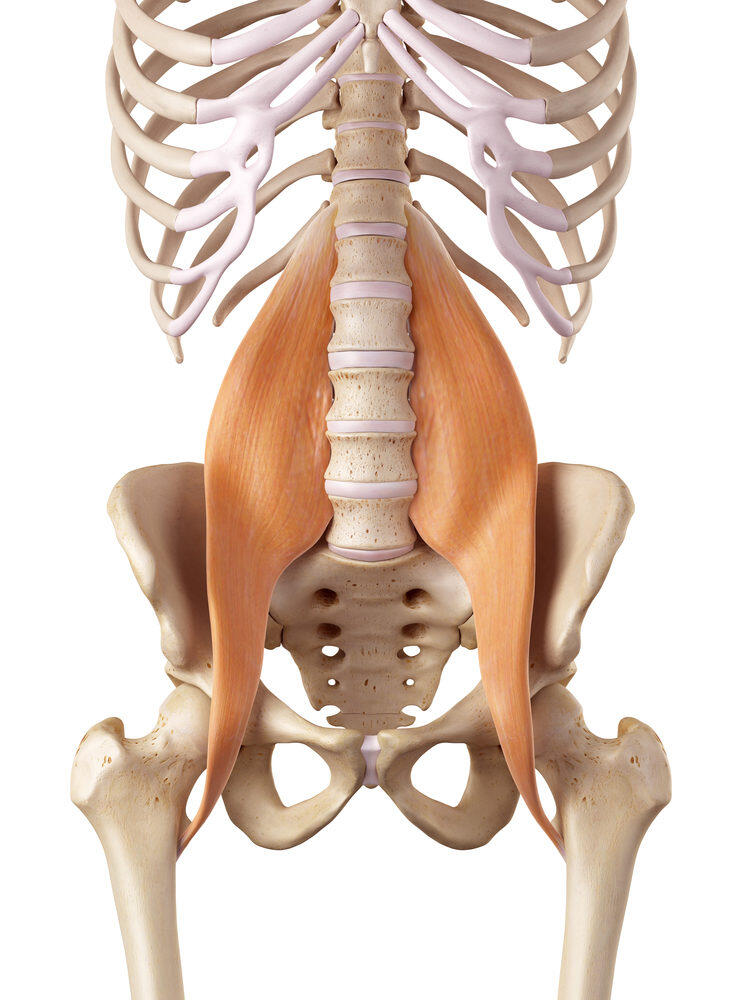
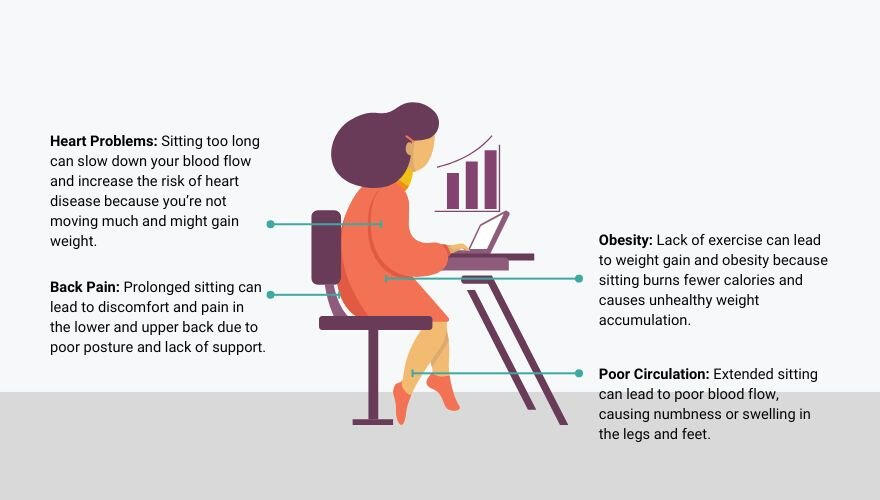
Taking a holistic view of the human body, prolonged sitting impacts more than just muscles. It requires minimal or no muscle activity, which can negatively affect blood lipid profiles and glucose metabolism, increasing the risk of chronic diseases such as cardiovascular disease (CVD) and Type II diabetes (T2DM) (Starkoff et al., 2015). A study by Pandey et al., 2016 found a higher risk of CVD in individuals who spend more than 10 hours per day in sedentary behaviors.Similarly, Bailey et al., 2019 confirmed this link and further adjusted for levels of physical activity. Different study, similar results - their findings revealed that the increased risk of diabetes remained unaffected by physical activity levels, while the increased risk of CVD was slightly reduced but still significant. Perhaps most striking is the evidence that even one hour of daily moderate to vigorous physical activity could not fully counteract the effects of prolonged inactivity on glucose metabolism and cholesterol if the majority of the day was spent sedentary (Starkoff et al., 2015).
Now that we understand the negative consequences of prolonged sitting, let’s explore some practical solutions. One of the simplest strategies is to take more frequent standing or walking breaks. These breaks help change your position, activate muscles, promote blood flow, and get your body moving. A study by Duran et al., 2023 found that higher-frequency, longer-duration breaks—such as walking for 5 minutes after every 30 minutes of sitting—improved blood lipid profiles and glucose metabolism. Meanwhile, lower-frequency, shorter-duration breaks—such as walking for 1 minute after every 60 minutes of sitting—were effective in reducing blood pressure (Duran et al., 2023). For better metabolic and blood sugar/lipid outcomes, Bailey et al., 2020 recommended breaking up sitting time with 2–5 minutes of light to moderate walking every 20–30 minutes in able-bodied individuals.



If you’re unable to stand or walk—for example, when driving, during meetings or presentations, or periods of intense focus—any movement can still provide benefits. Bailey et al., 2020 also studied paraplegic participants who performed 2 minutes of moderate-intensity activity using an arm crank ergometer every 20 minutes. The resulting improvement in blood glucose levels was comparable to that seen in able-bodied individuals engaging in similar walking bouts as listed above. This highlights the importance of incorporating movement, regardless of your situation.
You might be wondering how to stay active when you're stuck sitting—whether at your desk, driving in a car, flying on an airplane, or even sitting in a stadium or arena. That’s where we come in. Here are some of our go-to strategies for getting your body moving, even when standing up isn’t an immediate option.
1) Seated Hip ShiftsThis one is a PFP special. In a seated position, try pulling one knee back behind the other. I If your knee is pressed against your desk, focus on pulling it away from the desk. For a visual cue, imagine turning the zipper of your pants toward the side of the body where you're pulling the knee backward. As you do this, the opposite knee will naturally shift forward. This creates rotation at the pelvis and engages your hips, keeping your body moving. Then, alternate by pulling the other knee backward, repeating this alternating sequence. Static sitting often leads to stiffness and tension, but performing this movement requires your body to release some of that tension to allow for hip rotation.Legend has it Coach Cesco performed seated hip shifts driving the entire 10 hours back home to NY from South Carolina and felt phenomenal (Cesco et al., 2022).
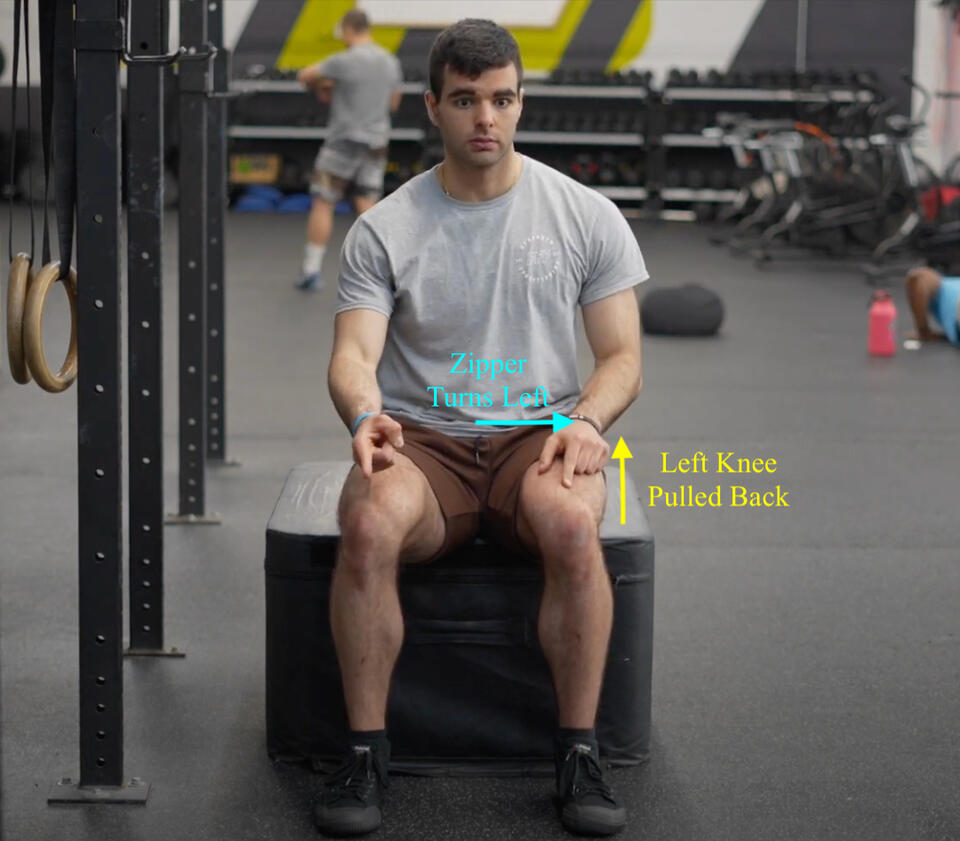


2) Seated Hamstring TucksThis is another PFP go-to. It’s a bit harder to master but highly effective. While seated, start by shifting more weight through your heels, then press your heels firmly into the ground. To take it further, maintain that heel tension and try tucking your back pockets down toward your heels—without simply rounding through your lower back. Another way to think of it is to bring your belt buckle toward your nose without rounding your lower back. This movement brings the bottom of your pelvis closer to your heels, activating the back of your thighs and engaging your hamstrings. You can hold this position for time or alternate between tucking/engaging the hamstrings and relaxing.Why is this a game changer? Think of your pelvis and the surrounding muscles as a pulley system. Prolonged sitting often leaves the hip flexors and front thigh muscles feeling “tight” and “stiff.” By contracting the muscles at the back of your thighs—especially while sitting— this will relatively open up the front of your hips, helping them stay mobile and loose while stuck sitting. This technique is a favorite of Coach Pete, who used it regularly during PT school lectures.
Other PFP Recommendations
3) Dynamic and Purposeful Breathing - Focus on achieving a full exhale to engage the side abs and activate the abdominal muscles. This helps promote stability and can reduce stiffness in the lower back, providing support while sitting.

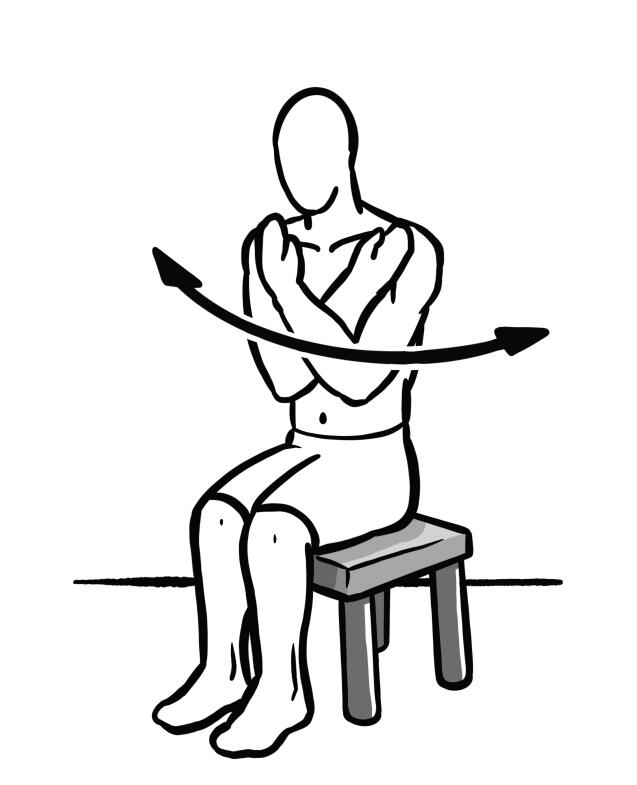
4) Seated T-spine Rotation - Get your upper back and neck moving by rotating your torso. For an added challenge, combine this with hip shifts for a two-for-one movement! As you rotate your upper body to one side, shift the corresponding knee backward for an integrated stretch and mobility boost.
5) Seated Pelvic Tilts - This is an excellent way to get your lower back moving while seated. Alternate between gently arching and rounding your lower back within your comfort zone. This helps release stiffness and promotes mobility in the lumbar spine.

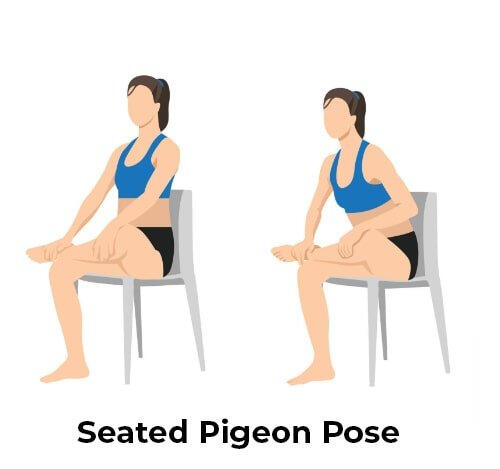
6) Seated Pigeon Stretch - Change up the position of your hips by crossing one ankle over the opposite knee to stretch the muscles in the backside of the hip. This can help alleviate tension in the hips and glutes.
These are just a few of our suggestions. The key is to incorporate subtle and gentle movements while sitting to counteract the negative effects of prolonged sitting. Sitting is a natural part of life and is neither inherently good nor bad. In fact, some of life’s best moments—like enjoying meals with family and friends or traveling—often involve sitting.By performing subtle movements during your time spent sitting, you can reduce discomfort and enhance your quality of life, allowing you to fully enjoy those amazing moments, experiences, and journeys in life that involve sitting.
